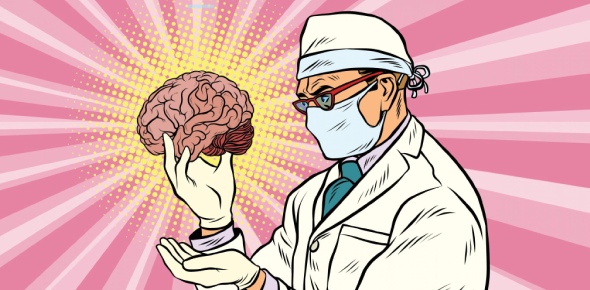Can those who are affected most by social inequality become “neurobiologically poor”? The concept of neuroplasticity has emerged over the last several decades as a popular explanation for how brains change across human lifespans. According to a journal article published recently in Science, Technology, & Human Values, it has also become common for researchers to use this idea to reframe social issues, like poverty, in neurological terms. This new paper presents a critical analysis of this trend, which is just one of the most recent attempts to reduce individuals’ social lives to a set of neurobiological traits.
As explained by the author the paper, Victoria Pitts-Taylor, Professor of Feminist, Gender, and Sexuality Studies at Wesleyan University, recent attempts by neuroscientists to develop “neural phenotypes of poverty” emerge out of “classed, gendered, and racialized inequalities that not only affect bodies in material ways but also shape scientific understandings of difference.”
She adds that it “not only establishes and reinforces norms of brain structure and function but also provides an impetus for interventions that may converge with neoliberal and carceral modes of governance.”
 A neural phenotype, in this sense, can be understood as “an observable set of brain traits resulting from the interaction of an organism with its environment.” This is notably different from earlier attempts to link psychiatric diagnoses to genotypes, which are encoded through individuals’ DNA and possess no relationship to what occurs outside of their bodies.
A neural phenotype, in this sense, can be understood as “an observable set of brain traits resulting from the interaction of an organism with its environment.” This is notably different from earlier attempts to link psychiatric diagnoses to genotypes, which are encoded through individuals’ DNA and possess no relationship to what occurs outside of their bodies.
In recent years, researchers and clinicians have promoted the concept of neuroplasticity as a potentially revolutionary, non-deterministic approach to neuroscience. As Pitts-Taylor explains, prior to the mid-twentieth century, “[p]lasticity in the mature brain was thought to be limited to ‘functional’ or synaptic plasticity in learning. In the past several decades,” however “researchers have worked to demonstrate the brain’s ‘structural’ plasticity.”
The general idea of structural neuroplasticity has obvious appeal to anyone who considers their lived-experiences to be caused by more than the sum total of their genetics and/or neural connections. And yet, some have advocated restraint in applying the concept of neuroplasticity too broadly, cautioning that many claims associated with it are overstated.
According to Pitts-Taylor, the notion of neuroplasticity can be used in different ways to draw at times contradictory conclusions about the nature of brain development. On the one hand, it offers a way to think about the “organ as constantly changing and developing, always in a state of Becoming.” On the other hand, there is a tendency for “the plastic brain [to be] understood as ‘passively’ inscribed by, and vulnerable to, experience.”
With the first of these two perspectives, the emphasis is on how the brain can be actively reconstructed from one series of experiences to another. With the second, the brain is construed as something like a blank slate that can be forever susceptible to (sometimes permanent) conditioning from environmental influences.
Pitts-Taylor’s view on neuroplasticity is that it is best understood as a useful frame for thinking about how our brains are altered unpredictably through our interactions with others across our lives. And yet, neuroplasticity has increasingly become part of risk-assessment models used to predict social threats to normal human development.
Specifically, Pitts-Taylor illustrates how the concept has been used increasingly within the “neuroscience of poverty” to promote a form of biosocial determinism. Here, “scientific assessment of risky bodies and behaviors can amount to a racialized pathologization of already marginalized populations.” As such, the author utilizes an intersectional, critical socio-material approach to thinking through the issues involved in these conversations.
This approach is intersectional because it explores how different social structures (e.g., race, gender, class) overlap at different scales of reality to produce complex, interrelated effects. It is socio-material insofar as both the physical substances of brains and the material tools used by neuroscientists are considered essential to how neuroscientific representations of human development are produced.
With this framework, Pitts-Taylor analyzes 21 studies about the “neuroscience of poverty” published between 2004 and 2017. Her article also overviews secondary literature on the topic. Specifically, the focus is on how such studies measure, classify, and propose interventions based on the neuroscience of poverty.
She summarizes these studies’ proposals according to the following three conclusions:
- Brain differences can be detected between low and middle-SES populations;
- SES disparity is nonuniform across regions and functions of the brain; and
- Lower-SES brains are delayed, underdeveloped, or otherwise inferior.
One example of a study described by Pitts-Taylor was conducted on two sets of kindergarten students from Philadelphia—one classified as low socioeconomic status (SES) and the other as middle SES. After a series of tests were run on both groups, the authors of the study interpreted disparities in performance as being caused by irregularities in the first group’s “medial temporal/memory system” and the “prefrontal/executive system.” These areas of the brain are typically associated with memory, future planning, and self-control.
Importantly, these interpretations were made almost exclusively on the basis of cognitive tests—no brain scans were conducted for this study. Moreover, the authors describe brain systems associated with these cognitive tasks as being the only ones affected by poverty.
Pitts-Tayor describes this as being essential to their argument because:
“while the researchers identify the language and executive systems of poor children as compromised, other brain systems, such as those for spatial and visual cognition, are not. The claim that some brain areas are more affected by environmental inputs than others is a key basis for the development of a neural phenotype of poverty.”
Another study overviewed by Pitts-Taylor performed MRI scans on the brains of 1,000 young people to draw correlations between brain structure, cognitive ability, SES, and parental education. The authors of this study concluded that parental education has a determinative effect on the total brain surface, which in turn influences the cognitive ability of the participants.
Going further, other studies have drawn on this data-set to not only predict what types of brains young people living in poverty might have but assert that such neural phenotypes could persist across their lifespans. Their goal is to reveal “endophenotypic biomarkers” of poverty, allowing interventions to become more targeted. As Pitts-Taylor notes, biomarkers are supposed to be objective characteristics, while endophenotypes are “associated with genetic heritability and root causes of disease.”
According to Pitts-Taylor, however, in several of these studies, “researchers make normative judgments about the levels of neural activity in specific brain regions even when there are no differences in the performance of cognitive tasks.”
A major problem Pitts-Taylor cites regarding this literature is that current measures are often interpreted as indicators of trauma or stress that occurred at some point in the past. This is often presumed to have occurred long before the research they conducted even began.
Some studies even traced causes of current measures to conditions of poverty that parents or grandparents of the young people were exposed to. All of this despite the fact that no direct causal mechanisms were identified to account for these assumed generational links.
Another problem noted by Pitts-Taylor is that such studies often reduce most racial differences to economic disparities. In other words, they “treat race as a confounding variable that needs to be bracketed,” rather than a complex set of social phenomena essential to the subjectivities of the participants.
Pitts-Taylor proposes that an intersectional approach would be useful here because “[r]ace cannot be found in the brain, but it matters through its effects on socioeconomic mobility,” adding that “racial segregation is a key structural factor in the perpetuation of poverty.” One of the ways this perpetuation occurs, moreover, is in how participants are grouped in scientific studies, and how the results from such research are used to inform public policy.
Given how the concept of neuroplasticity has been used to make claims across such a wide variety of social contexts, the social consequences of such research extend well beyond academia. And as biotechnologies become more powerful and neural therapies more popular, thinking critically about how our brains are related to our social lives will become increasingly important.
Whether we understand our brains and cognitive capacities to be determined largely by social structures or not, it is clear that some research perspectives provide more space for human agency than others. By its nature, incarceration in America serves to reinforce behavioral norms cutting across race, gender, as well as a range of other social categories.
By exposing links between research on neuroplasticity and carceral modes of governance, authors like Pitts-Taylor illustrate how healthcare and science are already being used to define and confine individuals in previously unimaginable ways.
As she explains:
“Brain phenotypes are situated in broader contexts that shape their emergence, meaning, and impact; understanding these contexts as carceral raises questions about the social justice implications, as well as the specifically racial implications, of neuropoverty research.”
****
Pitts-Taylor, V. (2019). Neurobiologically Poor? Brain Phenotypes, Inequality, and Biosocial Determinism. Science, Technology, & Human Values, 44(4), 660–685 (Link)















Of course these brilliant scientists are paying no attention to how poverty effects one’s diet and exposure to environmental pollutants. If they did, they’d be likely to discover the horrifying fact that some poor people might be just as smart as they are, leading to shock and horror among our alleged intellectual elites, now forced to build concentration camps to prove their original assumptions. My friend, Dr. Joe, a high school drop out with a PhD, would get quite a charge out of their terror, should his degree hide his status.
Report comment
But how would we decide who is better or worse than us? How could we survive without a hierarchy of “goodness” so we’ll know that even though we suck we’re not as bad as THAT guy over there?
The need to establish dominance hierarchies seems to be central to Western culture.
Report comment
You could start by being more aware of the characteristics of the people you know and those who you meet, without being overwhelmed by connections and simple degree of education.
Report comment
Removed for moderation.
Report comment
Interesting, how many neuroscientists got into the dispensary with psychosis to understand this?!
Report comment
Nowadays, you don’t have many neuroscientists who openly admit to taking hallucinogens, because it would be a black mark on their careers. And they certainly can’t admit these substances can provide any useful information about how your brain works, because that would also be a similar career black mark.
Report comment
Don’t forget psychiatry creates social inequalities by permanently altering the brain.
Report comment
It’s “neuroscientists” sponging off the Welfare State.
Report comment
During a large number of murders in early Soviet Russia, unwanted people were called reactionaries, whole political and social movements were called “reaction”. Apparently, these term migrated from Darwin’s books, which, as known, Stalin loved. Therefore, I think we should pay attention to this word.
Is a reaction a reversible process in chemistry? It is written that some reactions are reversible. Based on what logic did the authors of the article conclude that *social inequalities can Permanently alter our brains*? Are there any similarities (justification) of the so-called Chronic psychosis?
Report comment
I think the real issue is how our life course is altered, what kind of a biography, and what in the way of public honor we are left.
The more contact with the ~mental health~ or ~autism~ systems, the worse someone’s prospects are going to be.
To remedy this after the fact, the best approaches will always be legal and political.
Report comment